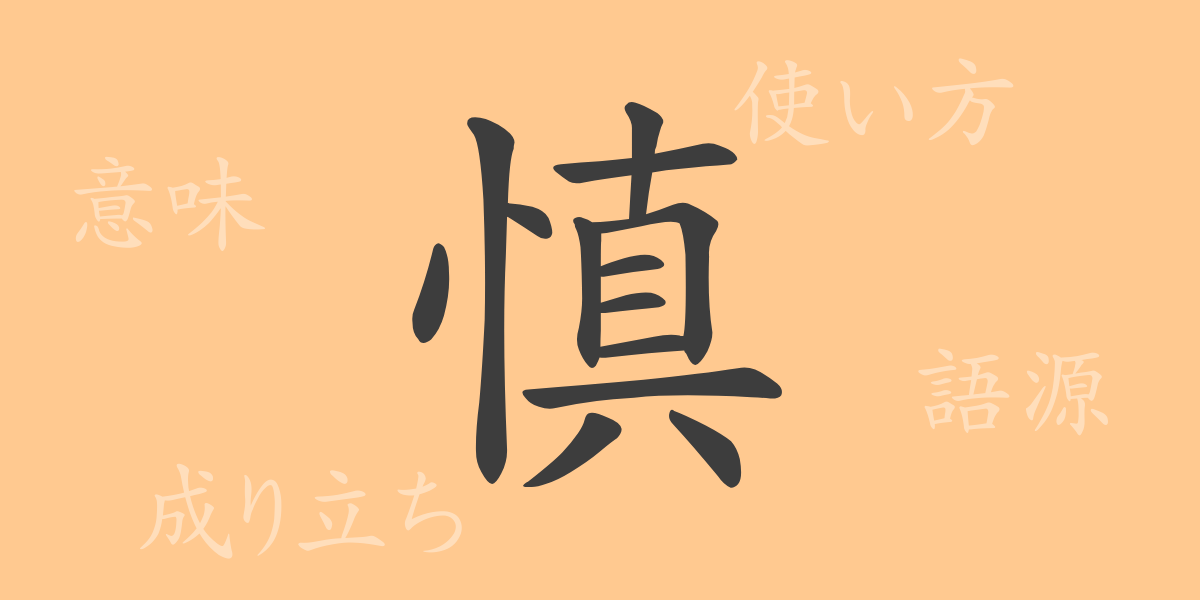The beauty of the Japanese language lies in its complexity and depth. The meanings embedded in a single Kanji character can sometimes be perceived from its shape and the flow of the brush. Today, we spotlight the Kanji ‘慎’ (しん), a commonly used character in Japanese, to delve deeply into its allure. We will explore the breadth of meaning it holds, its uses, and its connection to the Japanese spirit.
Origins of 慎 (しん)
The Kanji ‘慎’ developed from ancient Chinese oracle bone script. This character combines ‘心’ (りっしんべん – heart) with ‘真’ (しん – truth, reality), symbolizing the act of keeping the heart true. Embedded within ‘慎む’ (to be cautious) is the notion of self-control and the pursuit of truth originating from the heart.
Meaning and Usage of 慎
‘慎’ connotes self-discipline and cautious behavior. It also conveys humility and moderation in one’s approach to matters. Typically, it is used in names and scenarios that demand prudence.
Readings, Stroke Count, and Radical of 慎
The Kanji ‘慎’ is as rich in form and meaning as it is in its readings and components.
- Readings: On’yomi is ‘シン’, Kun’yomi are ‘つつしむ’, ‘つつし’
- Stroke Count: 13 strokes
- Radical: 心 (りっしんべん – heart)
Phrases, Idioms, and Proverbs Using 慎
There are many phrases, idioms, and proverbs including ‘慎’, each reflecting the depth of the Japanese language:
- 慎重 (しんちょう): Being careful and cautious in actions.
- 慎み深い (つつしみぶかい): Describes a humble and modest character.
- 慎ましやか (つつましやか): Symbolizes the virtue of being modest and unobtrusive.
Conclusion on 慎
The Kanji ‘慎’ has long been cherished as a symbol of Japanese virtues and behavioral styles. The mindset suggested by its form continues to be a valued ideal among many. This character teaches us the importance of living cautiously and with humility.

























